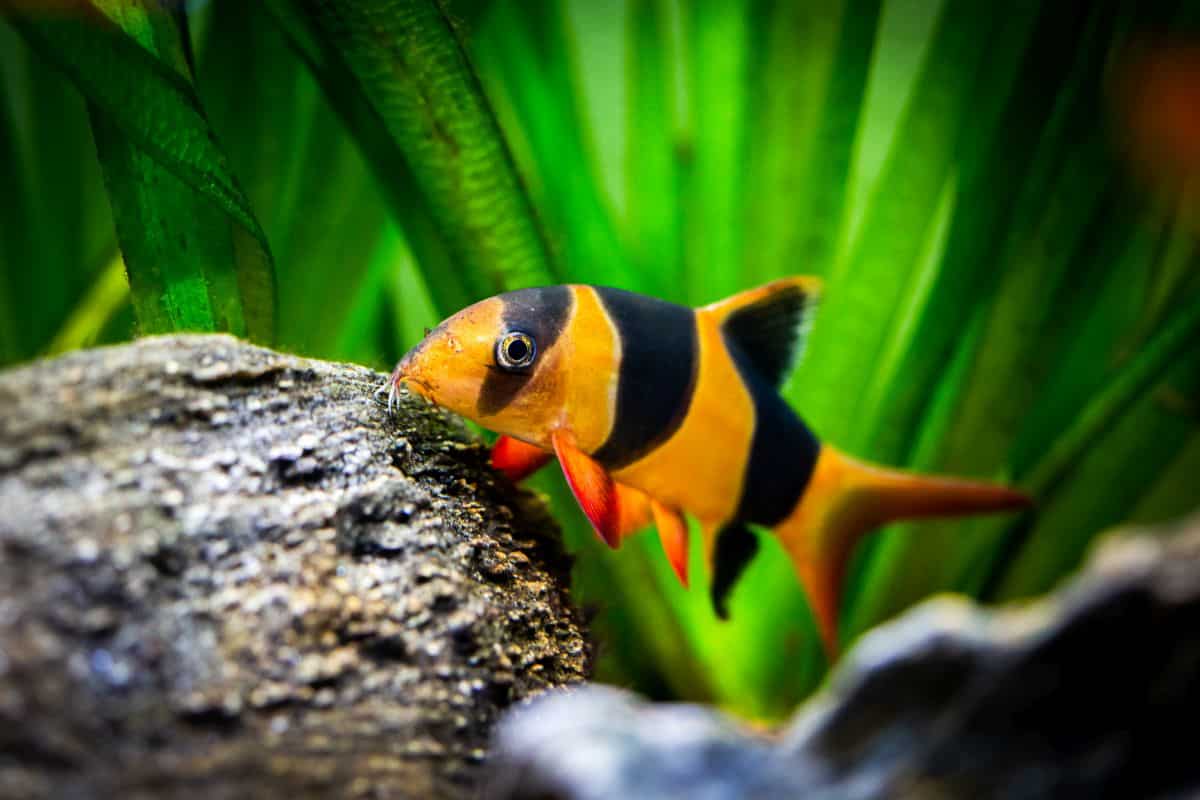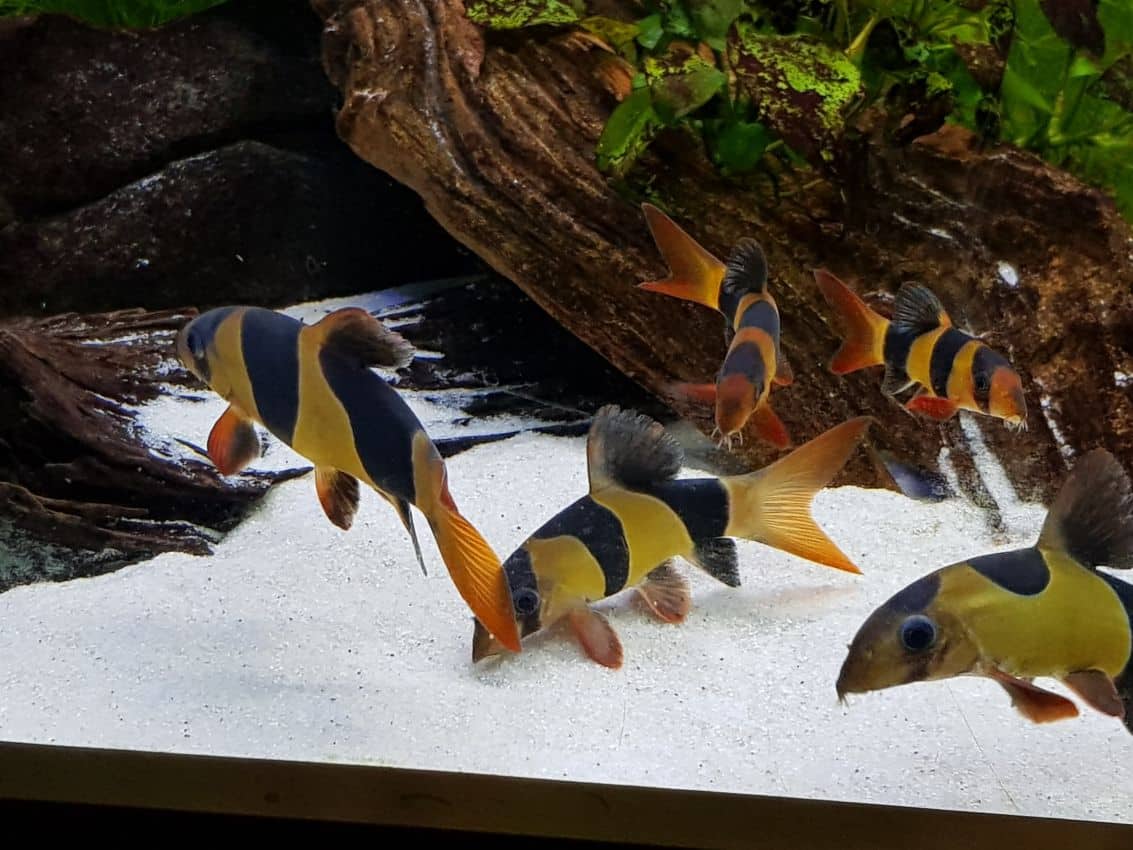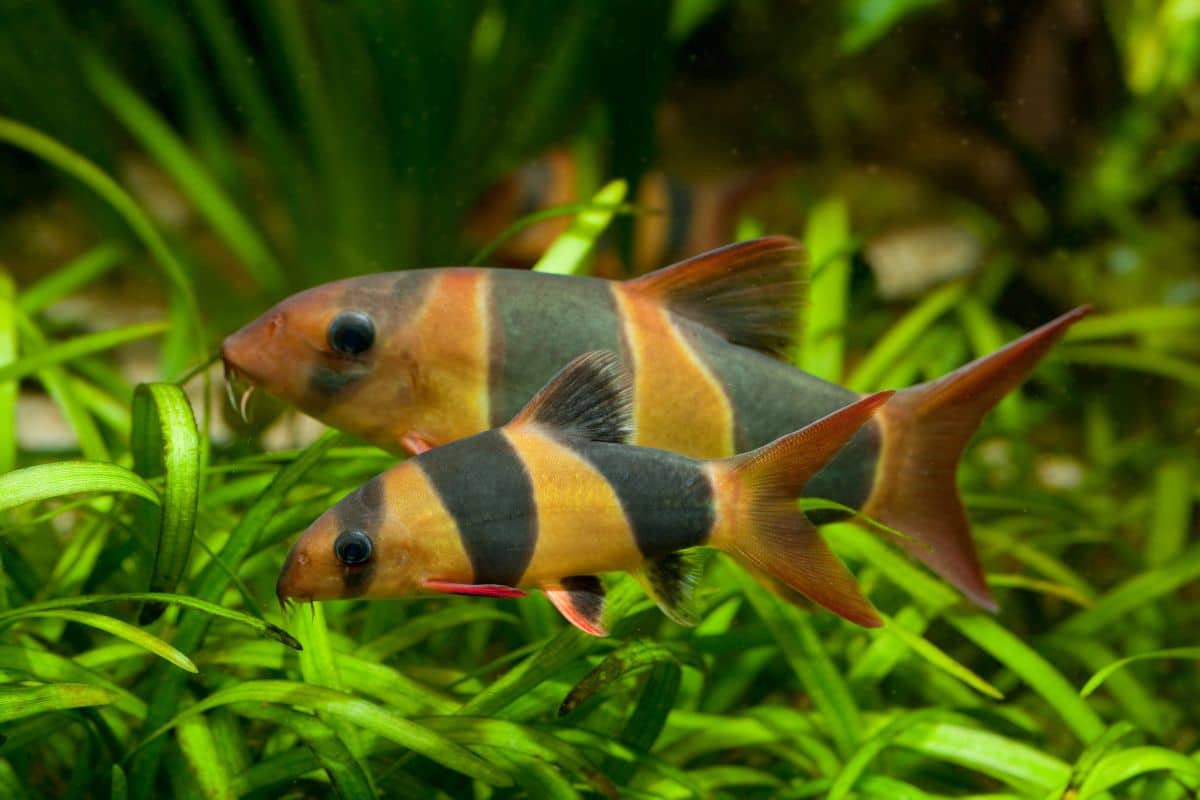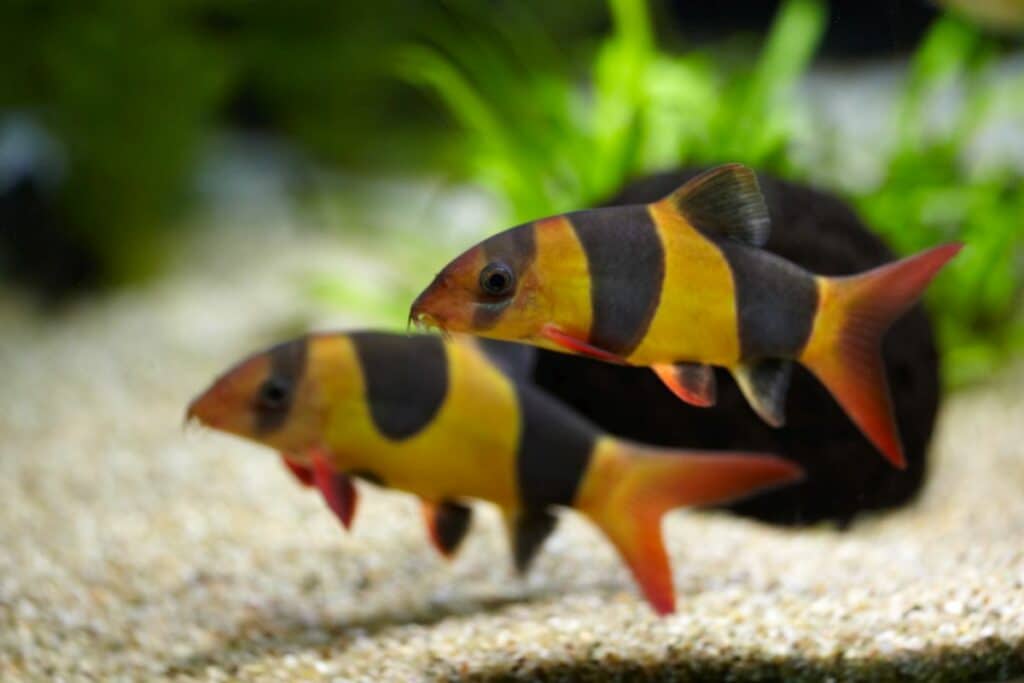the essentials in brief
Clown loaches can be kept well with peaceful, larger fish species such as cichlids or catfish. You can find out more about the posture here...
Loaches are social fish, so they should be kept in groups of at least five or more to encourage their natural behavior and well-being.
Clown loaches are generally considered peaceful fish, but they can be territorial, especially when they feel threatened. More about the character of the clown loach…
The clown loach is a fascinating fish that is a popular resident of freshwater aquariums due to its striking appearance and interesting behavior. With its attractive appearance, its sociable character and its special housing requirements, the clown loach offers the aquarist the opportunity to create a lively and varied underwater world.
In this article you will receive information about the appearance, behavior and attitude of the clown loach.
Appearance

The clown loach, scientifically known as Botia macracantha known, is an intriguing fish with a striking and attractive appearance. She belongs to the family of loaches and is originally from Southeast Asia. The clown loach is characterized by its unique body shape and coloration.
The Mudlasher's body is elongated with a flattening on the sides. It reaches a length of 15-20cm, but can be even larger in exceptional cases. The head is rrelatively large and ends in a rounded mouth. The eyes are striking and give the mud whip a watchful expression.
The mudpeitzger's basic color is strong orange to yellow. Over the entire body run at regular intervals wide, dark horizontal stripes. These stripes are individually different and can be dark brown to black. Between the strips are often located small spots or dots, which complete the drawing of the loach.
Another characteristic feature of the mud peat are the strong, prickly thorns, that run along the lateral line of the body. These spikes are not only used for defense, but also make the Mudcheater look unmistakable. The dorsal fin is high and extends along the entire back. The pelvic fins are broad and slightly rounded.
Note: The appearance of the mud-chewer can change over the course of its life. Young specimens often have a lighter base color and the stripe pattern is more pronounced. With age, the colors may intensify and the pattern may fade, making the loach appear darker and more contrasting overall.
The character
The clown loach not only has an impressive appearance, but also an interesting character. It shows various behaviors that make it a fascinating aquarium dweller.
Clown loaches are generally sociable and curious fish. They are very active and often explore their habitat. Their lively nature makes them interesting objects to observe because they are constantly on the move.
A striking behavioral trait is their tendency to to live in groups. They feel most comfortable in the company of conspecifics and like to form swarms. Swimming and hunting for food together gives them a sense of security and encourages their natural behavior.
Despite their sociable nature, clown loaches can territorial especially when it comes to their hiding spots or food sources. They can behave aggressively toward other fish species, especially when they invade or threaten their habitat. It is important to provide them with enough space and hiding places in the aquarium. In this way, conflicts can be minimized.
clown loaches are omnivore with a keen appetite. They are known for their fondness for snails and can help control snail populations in the aquarium. However, they also eat other types of food such as flake food, pellets, live or frozen insects and worms. Feeding should be varied to ensure a balanced diet.
Also interesting is the ability of clown loaches to associate with other fish. They are generally opposed to larger, peaceful fish species such as cichlids or catfish peaceful.
Additional information: Clown loaches can help to promote the social behavior of other fish species. In this way, a harmonious community can develop in the aquarium.

posture, attitude
Keeping clown loaches requires a number of specific conditions in order to offer them an optimal living environment. Here are some important aspects to consider:
- Aquarium size: Since clown loaches can reach a considerable size and like to be kept in groups, a spacious aquarium is required. A minimum size of 200 liters is recommended to provide sufficient swimming space and hiding places.
- water values: Clown loaches prefer clean, good quality water. The water temperature should be between 24°C and 30°C, the pH should ideally be between 6,5 and 7,5 and the water hardness should be slightly acidic to neutral.
- Setting up the aquarium: Clown loaches need enough hiding places to feel safe and comfortable. The aquarium should be designed with roots, stones, caves and plants in order to offer the animals places to retreat and different areas in the tank.
- Lighting: Subdued lighting is preferred as clown loaches often live in shady areas in nature. The aquarium should be equipped with a combination of natural and artificial lighting to meet the needs of plants and fish.
- Social behaviour: Loaches are social fish and should be kept in groups of at least five individuals. They feel safer in a group and behave more naturally. However, it is important to monitor behavior in the aquarium to ensure there is no aggression or territorial fighting.
- Feeding: Clown loaches are omnivores and have a good appetite. A varied diet with high-quality flake food, pellets and additional live or frozen food such as snails, insect larvae or worms is recommended. It is important to ensure that all the fish in the aquarium are fed sufficiently and that the clown loaches do not become too dominant.
- water quality: Regular water changes are essential to maintain good water quality and to provide the fish with optimal living conditions.
Note: A weekly water change of about 20-30% is recommended to reduce pollutants and promote the well-being of the clown loaches.

A great species of fish
The mud-cheek is a fascinating fish that delights aquarium enthusiasts with its attractive appearance and interesting behavior. Due to its sociable nature, its striking appearance and its special housing requirements, it offers the opportunity to create a lively and diverse underwater ecosystem.
With the right care and attention, the Mud Peitzger can be an asset to any freshwater aquarium.



